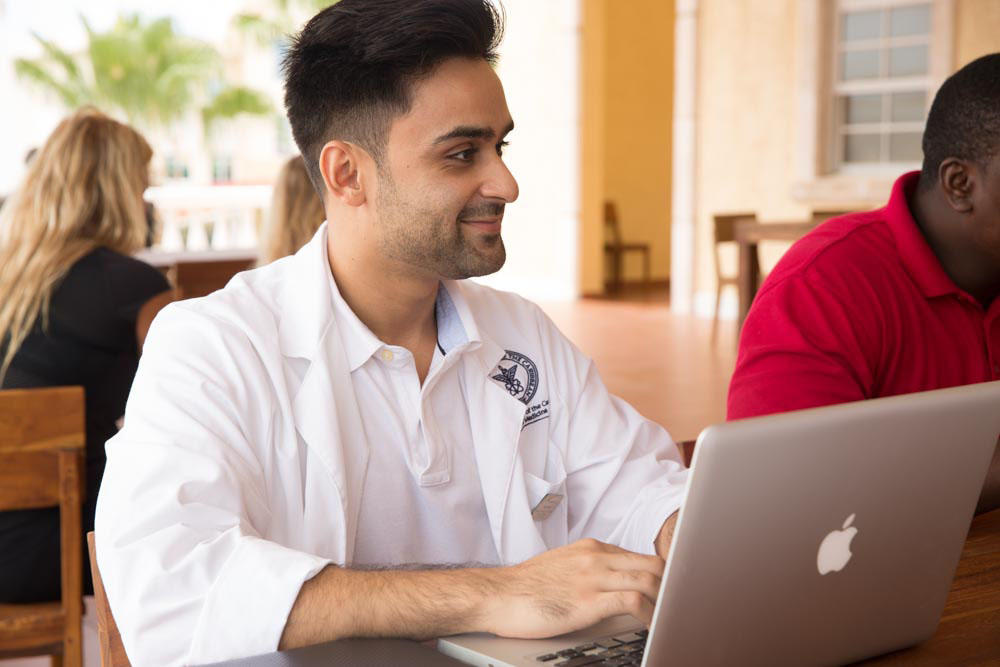Family medicine residency programs are designed to train adaptive, agile, compassionate, and well-rounded physicians. In 2023, the curriculum of family medicine residency programs shifted to better uphold these ideals. This new competency-based medical education (CBME) model gives future residents the flexibility to tailor their education to meet current community needs.
While this new model allows residents to customize their curriculum, it will continue to expose residents to various medical specialties.
How Long Is a Family Medicine Residency?
Family medicine residency programs are designed to meet the standards set by the Accreditation Council for Graduate Medical Education (ACGME). These standards are aimed at ensuring future family medicine physicians are knowledgeable, compassionate, and trained to care for a wide range of patients. Family medicine residencies accredited by the ACGME take three to five years to complete.
Dual family medicine residency programs train residents for family medicine and a subspecialty of their choosing simultaneously. As such, these programs can take longer to complete.
Dual family medicine residency programs include:
- Family medicine/emergency medicine
- Family medicine/preventive medicine
- Family medicine/psychiatric medicine
Throughout the residency, residents will gain hands-on experience in ambulatory, community, and inpatient environments. Unlike other residencies, family medicine places equal emphasis on subspecialties and family medicine. This prepares future physicians to handle patients with a wide range of ages, conditions, and illnesses as a family physician.
What Can I Expect From a Family Medicine Residency Program?
Traditionally, the curriculum offered in family medicine residency programs took a one-size-fits-all approach. It did not account for varying needs of each resident’s community and how it could prepare physicians to meet them. But as of July 2023, family medicine residency programs allow residents to create individualized learning plans.
This customized, competency-based approach allows residents to gauge their abilities and allocate additional time to master more difficult concepts. It also allows residents to find additional opportunities to develop skills suited to their specific communities. This flexibility allows future doctors to become empathetic physicians trained to resolve current societal needs.
Family medicine residency programs emphasize continuous, comprehensive patient care; outpatient care; and adaptability.
The first year of residency is known as the internship year or postgraduate year 1 (PGY-1). In it, residents spend time each week working in a family medicine practice as well as completing medical rotations. They will also study for and take the final part of their licensing exam prior to starting PGY-2.
Residents will establish a rapport with a panel of patients at the family medicine practice during PGY-1. They will continue to provide care for this panel throughout the entirety of their residency. In PGY-2 and PGY-3, students will spend more time in their specialty as well as in clinical rotations.
Residents are also expected to participate in didactic events such as case discussions, labs, or conferences. This allows residents to stay informed of current changes, share their knowledge with other professionals, and practice new skills.
To earn their board certification, family medicine residents participate in the following rotations:
- Emergency medicine
- Inpatient and outpatient care
- Obstetrics and gynecology
- Geriatrics
- Pediatrics
- Patient continuity of care
- Surgery
- Psychiatry
- Pain management
- Substance abuse
As residents complete their residency, Doctor of Medicine (MD) residents can apply for board certification through the American Board of Family Medicine (ABFM). Doctor of Osteopathy (DO) residents can apply for board certification through the American Osteopathic Board of Family Physicians (AOBFP).
How Competitive Is Family Medicine Residency?
Family medicine is a popular choice for medical students, as it’s the second largest medical specialty. Despite this, competition for family medicine residency programs is fairly low.
The number of family medicine residency positions increased to 5,107 in 2023, and 88.7%* of these positions were filled. Of this 88.7%:
- 29.4% of residents were MD seniors
- 29.6 of residents were DO seniors
- 15.5% of residents were U.S. IMGs
- 11% of residents were non-U.S. IMGs
- 1.8% were U.S. MD grads
- 1.4% were U.S. DO grads
- Less than 1% were filled by others
*The figures presented were pulled from the 2023 edition of Strolling Through the Match®. To access this free report, click the hyperlink in the above paragraph, scroll to the bottom of the page, and submit the form.
Creating a Better Future for Family Medicine
Family medicine is rooted in providing patient-centered, longitudinal, and compassionate care. Family medicine residency programs train future physicians to adapt to various needs by exposing them to multiple specialties. The new competency-based approach implemented in July 2023 allows students to explore specialties related to their community’s needs.
This custom approach helps future physicians better prepare for their careers by gaining exposure to relevant opportunities sooner. This can create well-rounded physicians prepared to treat and provide continuous care for all generations.
Looking for an innovative MD program? Submit this form to request more information.





